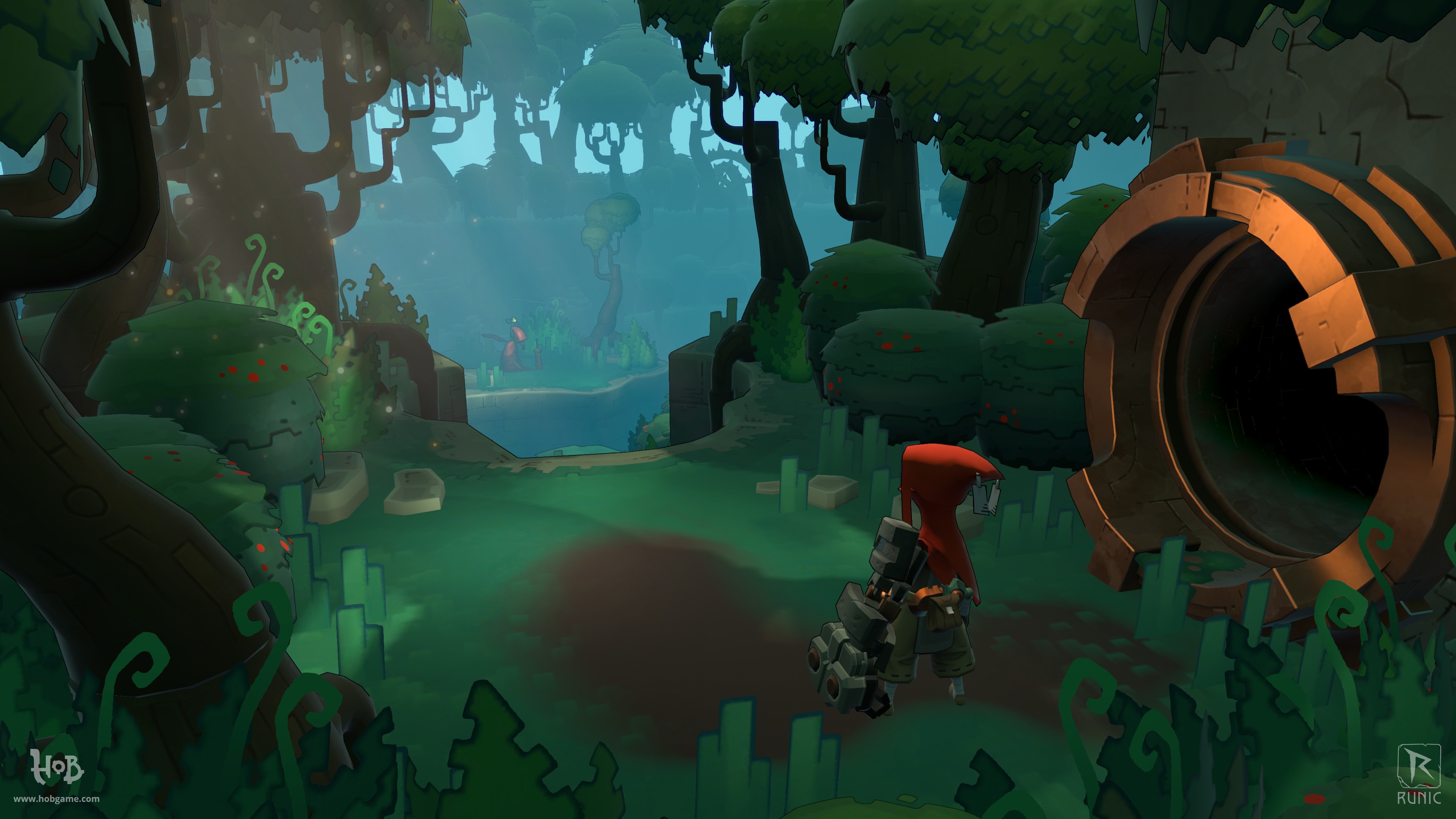In the early scenes, a terrible misfortune falls on a nameless, silent humanoid adventurer. In an attempt to open a pathway, he is poisoned after touching a semi-organic and very hostile blight. His silent and stoic golem companion rushes to his side, calm yet concerned. He watches our hero writhe in pain as the blight takes his arm inch by inch. Without so much as a pause, the guardian golem pins the mute down with one of his mighty hands, and with the other, lobs the affected arm clean off of our guy’s body.
This was an incredible segment, mostly because it was so unexpected. Such a consequential and dramatic turn for heroes I had only just met. The environment was immediately engrossing as well, as a land where the natural and the industrialized worlds don’t collide, but live almost harmoniously when compared to the purple scourge desecrating them both alike. I immediately wanted to know more
Several hours later, I was more than ok leaving the world of Hob with it’s mysteries unsolved.
With Torchlight and Torchlight II, Runic Games displayed both a reverence for the Infinity Engine-era RPG (specifically Blizzard’s interpretation of it) and an ability to recreate the most desirable parts of games from that era. The steampunk trappings and loot/multiplayer innovations made the house that Baldur’s Gate and Diablo II built feel fresh and new, more than just a new coat of paint on old foundations.
Hob looks to do the same with The Legend of Zelda, and as it tries admirably, it ultimately fails to innovate on the tried and true formula, and in some cases leans too heavily on some of the genre’s more archaic trappings.
For instance, solving puzzles is what you’ll be doing the most in your quest to put this broken world back together. The various ways you’ll push and pull blocks and hit switches to reveal new opportunities to hit more switches and push more blocks feels only partially engaging. Most to the time, the environmental puzzles are straightforward to the point of being menial. It’s so non-puzzling, you almost wonder why bother pretending that it is.
The real head-scratchers come in the form of simply finding your way to the next puzzle. The map is good at making sure you know where you are, where you’ve been, and the various collectibles you can reap around. It’s very bad at illustrating to you where you have to go; and more importantly, how you’re supposed to get there. This can leave you wandering through locations you’ve been through several times already, looking for that one wall you didn’t break, or that one ledge you didn’t jump down.
That there is no neon arrow blinking at you saying, “here you dumbass!” isn’t the issue. Many games, from Dark Souls to Hyper Light Drifter revel in their vagary. But unlike these games, there’s almost no context clues for making progress when put up against these quandaries. There’s no NPC’s to piece together obtuse dialog from, and there is an over abundance of paths to isolate through process of elimination. Time and again, the answer is simply wander aimless, and let the vibrant sounds of a struggling yet charming ecosystem soothe you out of biting your controller in half.
At least everything is so hauntingly beautiful. Be it in lush forests or barren deserts, everything quivers with life—or with a life it once had. But even then, as twisted trees and cast shadows over your journey, much of the landscape has a tendency to look and feel samey. Many of the hazards you navigate are similar. Thorny bramble, purple poison, and jagged muddy rocks are basically everywhere, and the narrow or wide spaces of flat land in between doesn’t do enough to break up the monotony when you spend so much time struggling to find the next path.
Closing Comments:
Hob is capable of incredible landscapes and shots on a macro level though. And they know it, as there are specific landmarks designed purposefully to let you bask in the view. But once you step away from the color and return to the task—to the banal non-puzzles, to the frustrating navigation, to the overly simple combat—the experience returns to shades of gray.
Hob was reviewed on a Standard PlayStation 4 system with a code provided by the developer.









